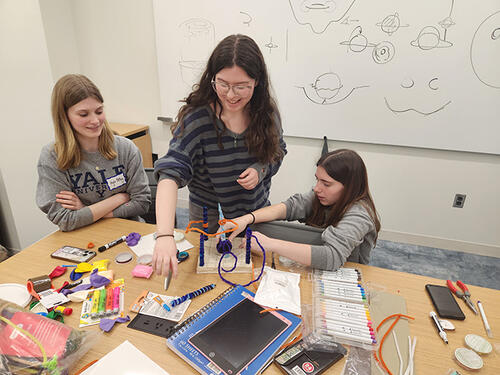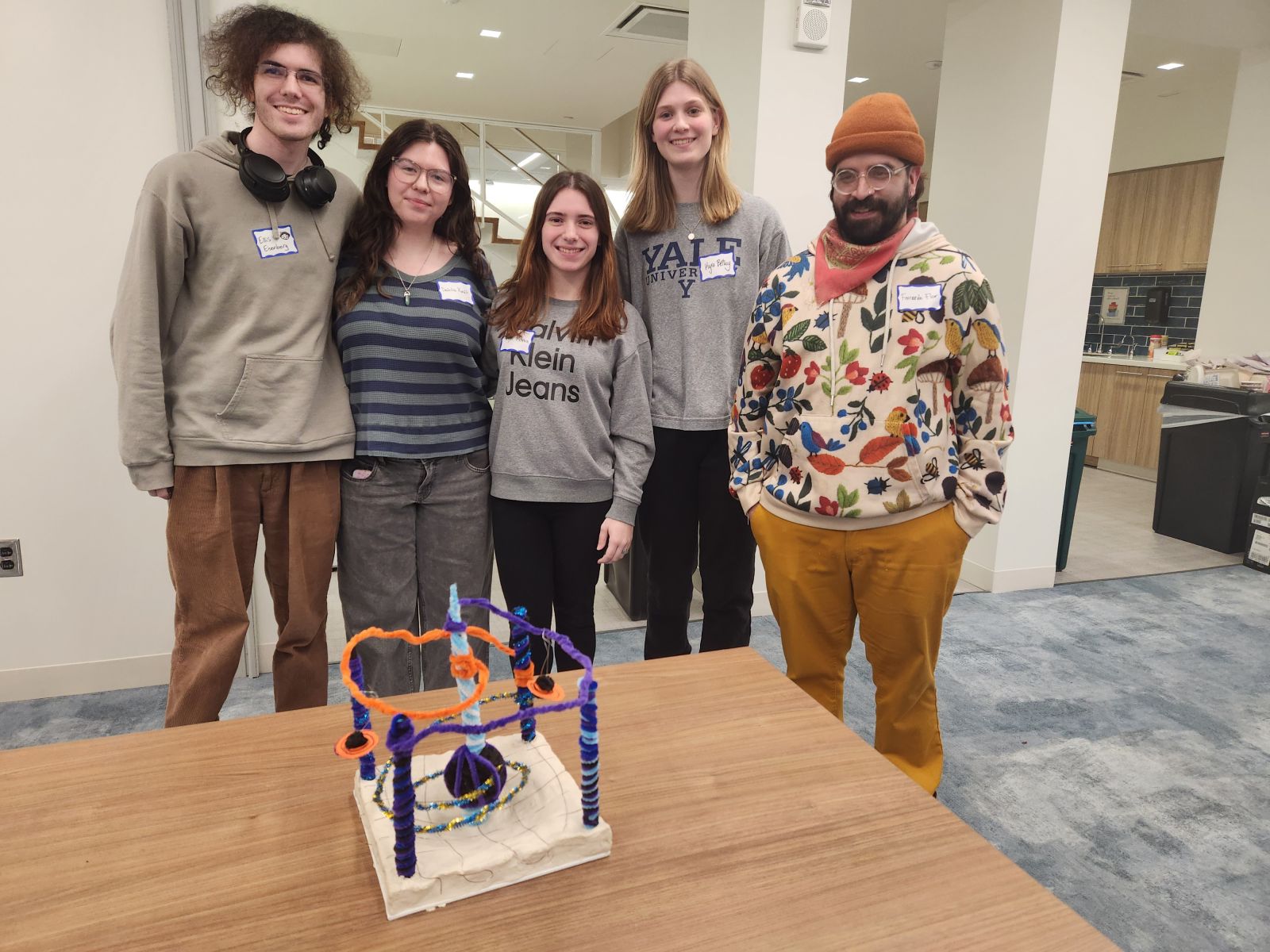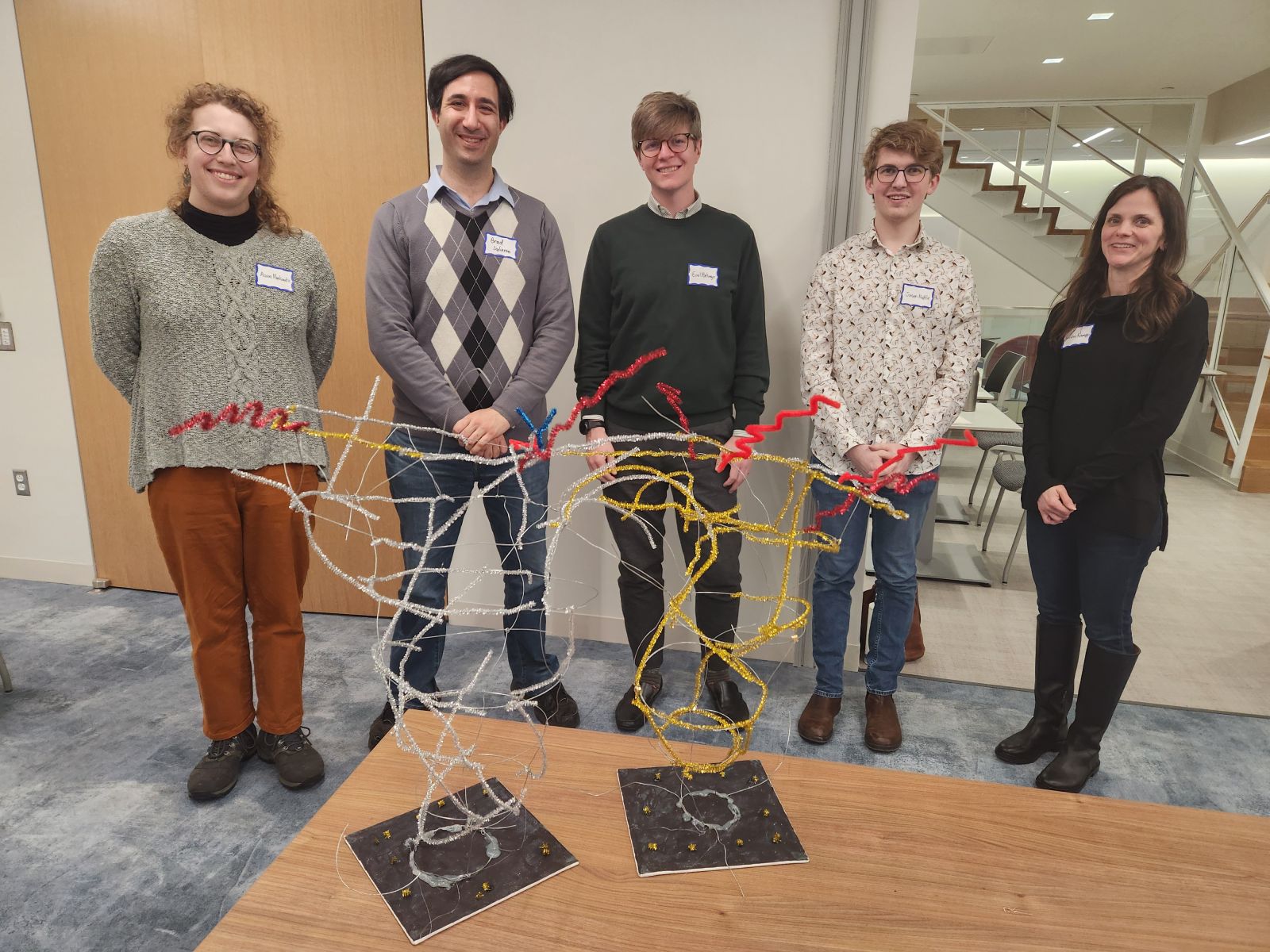
On February 6, artists, scientists, and engineers convened at the Yale Astronomy Department to participate in the 2025 Visualize Science competition This is the fourth iteration of this competition, which was originally conceived by Yale College alumnus Eric Fleischmann, B.A. ‘83, when he was visiting Yale’s Wright Lab for an alumni tour. This year’s contest was co-sponsored by Wright Lab, the Yale Departments of Astronomy and Physics, the Center for Collaborative Arts and Media, and the Yale Quantum Institute.
The objective of the competition was for teams of artists and scientists to work together to create a conceptual model of a scientific concept, revealed at the start of the competition, and realize it in either two- or three-dimensional format using materials provided for the competition. The concept chosen for this year’s competition was black hole growth.
In the event introduction, Wright Lab program manager Victoria Misenti explained, “In astronomy and physics, scientists often focus on discovering the invisible Universe, but the invisibility of what is studied makes it difficult to visualize or sometimes even explain the subjects of their research. The aim of this contest is for artists and scientists to come together and collaborate in creating something new together, to make the invisible visible, and increase understanding of not only a challenging scientific concept, but also each other.” Misenti organized Visualize Science 2025, along with Fleischmann and Kristin Kampp, program coordinator in astronomy.
After the introductions, Misenti moderated a panel of Yale scientists who are experts in the topic of black hole growth, including Priyamvada Natarajan, Joseph S. and Sophia S. Fruton Professor of Astronomy and Professor of Physics; Earl Bellinger, assistant professor; and Antonio Porras-Valverde, postdoctoral fellow, whose research is partially funded by the Heising-Simons Foundation. The video of the panel will be made available on the Wright Lab YouTube channel.
The participants then received art supplies and broke into two teams to work together on realizing the concept of black hole growth artistically.
When the teams completed their models, they presented them to all present and two awards were given out. The people’s award, decided by vote of all present, went to the group that created “Merger and Accretion”. The judges award, decided by Fleischmann and Misenti, went to “Merger”. The two pieces are pictured, below, along with the names of the team members who created each piece.
Merger and Accretion

Team members pictured (L-R): Ellis Eisenberg, Dahlia Kordit, Kylie Mirra, Kyra Bettwy, Fernando Antonio Flor
Merger

Team members pictured (L-R): Aaron Markowitz, Brad Galiette, Earl Bellinger, Jason Nuttle, Kristin Kampp
More images of the event can be found on our Flickr album

